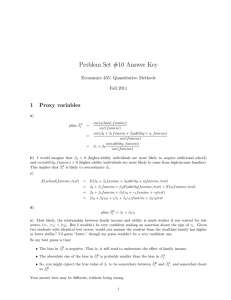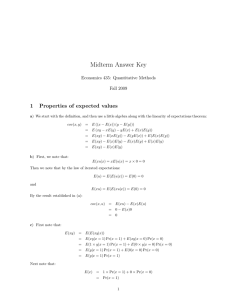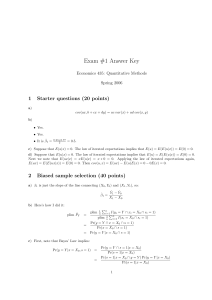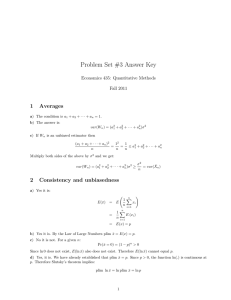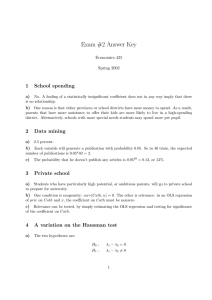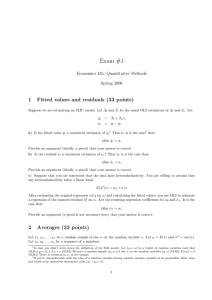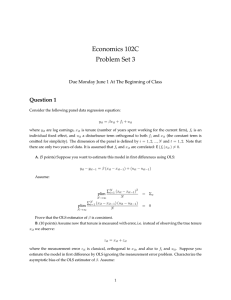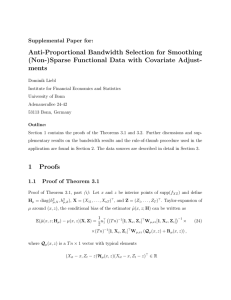Exam #2 Answer Key 1 Ugly criminals Economics 435: Quantitative Methods
advertisement
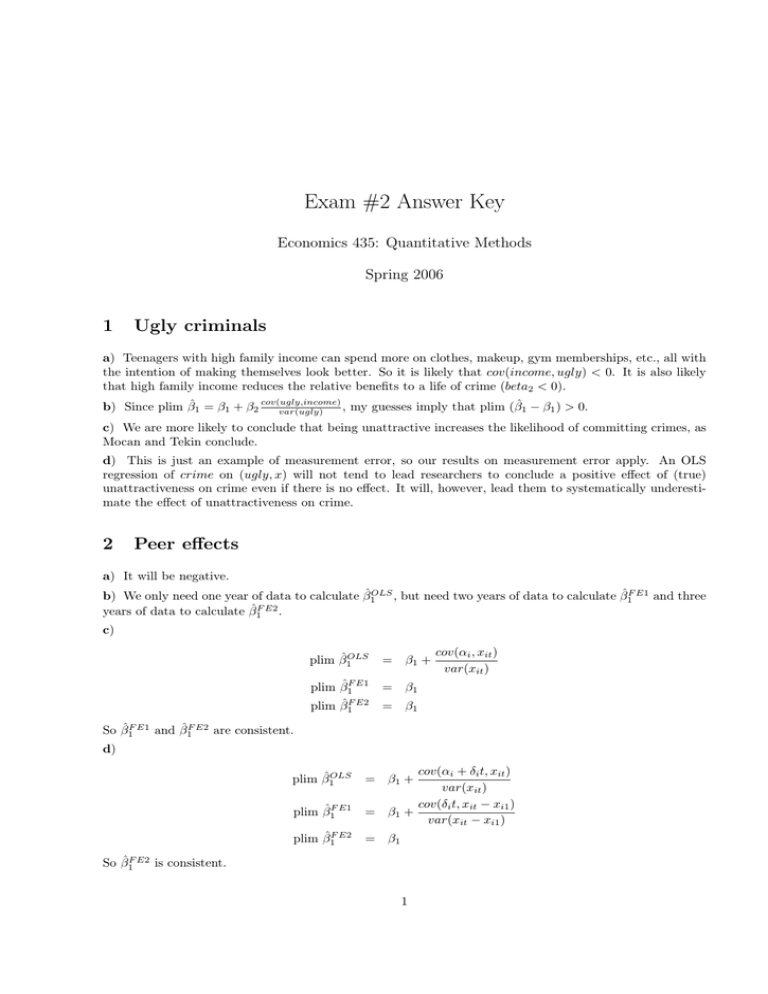
Exam #2 Answer Key Economics 435: Quantitative Methods Spring 2006 1 Ugly criminals a) Teenagers with high family income can spend more on clothes, makeup, gym memberships, etc., all with the intention of making themselves look better. So it is likely that cov(income, ugly) < 0. It is also likely that high family income reduces the relative benefits to a life of crime (beta2 < 0). , my guesses imply that plim (β̂1 − β1 ) > 0. b) Since plim β̂1 = β1 + β2 cov(ugly,income) var(ugly) c) We are more likely to conclude that being unattractive increases the likelihood of committing crimes, as Mocan and Tekin conclude. d) This is just an example of measurement error, so our results on measurement error apply. An OLS regression of crime on (ugly, x) will not tend to lead researchers to conclude a positive effect of (true) unattractiveness on crime even if there is no effect. It will, however, lead them to systematically underestimate the effect of unattractiveness on crime. 2 Peer effects a) It will be negative. b) We only need one year of data to calculate β̂1OLS , but need two years of data to calculate β̂1F E1 and three years of data to calculate β̂1F E2 . c) plim β̂1OLS = β1 + plim β̂1F E1 = β1 β̂1F E2 = β1 plim cov(αi , xit ) var(xit ) So β̂1F E1 and β̂1F E2 are consistent. d) plim β̂1OLS plim β̂1F E1 plim β̂1F E2 cov(αi + δi t, xit ) var(xit ) cov(δi t, xit − xi1 ) = β1 + var(xit − xi1 ) = β1 + = β1 So β̂1F E2 is consistent. 1
